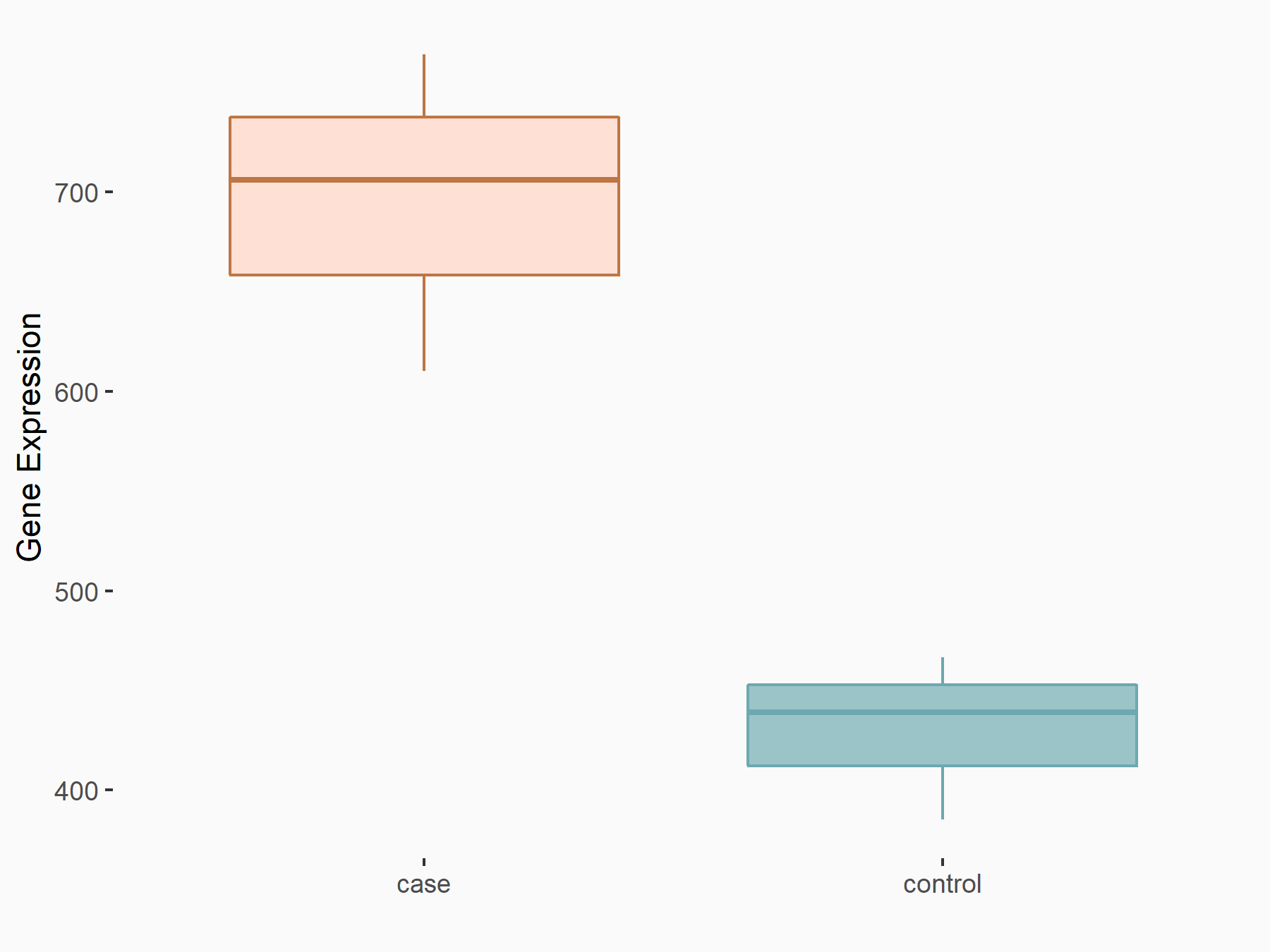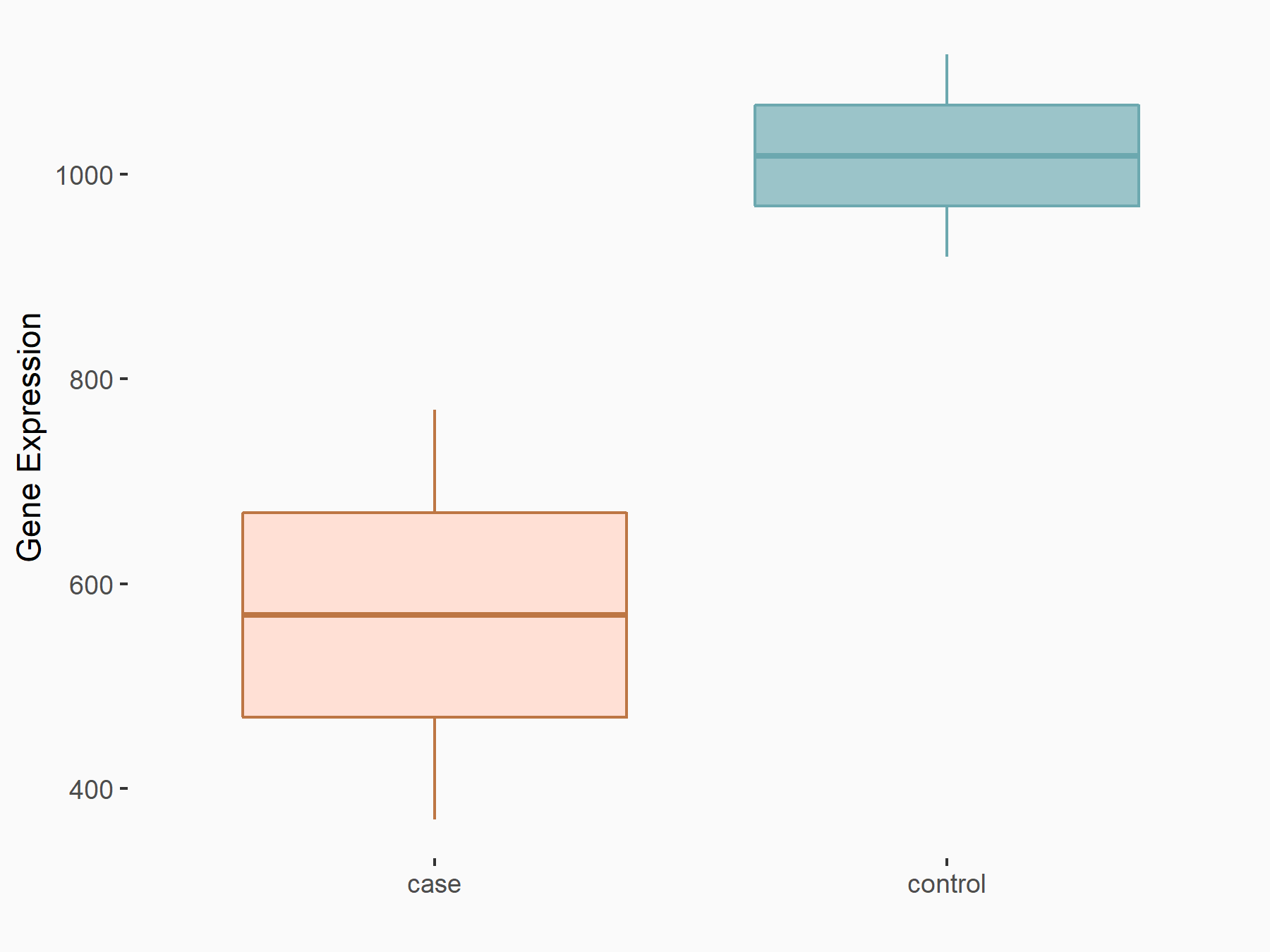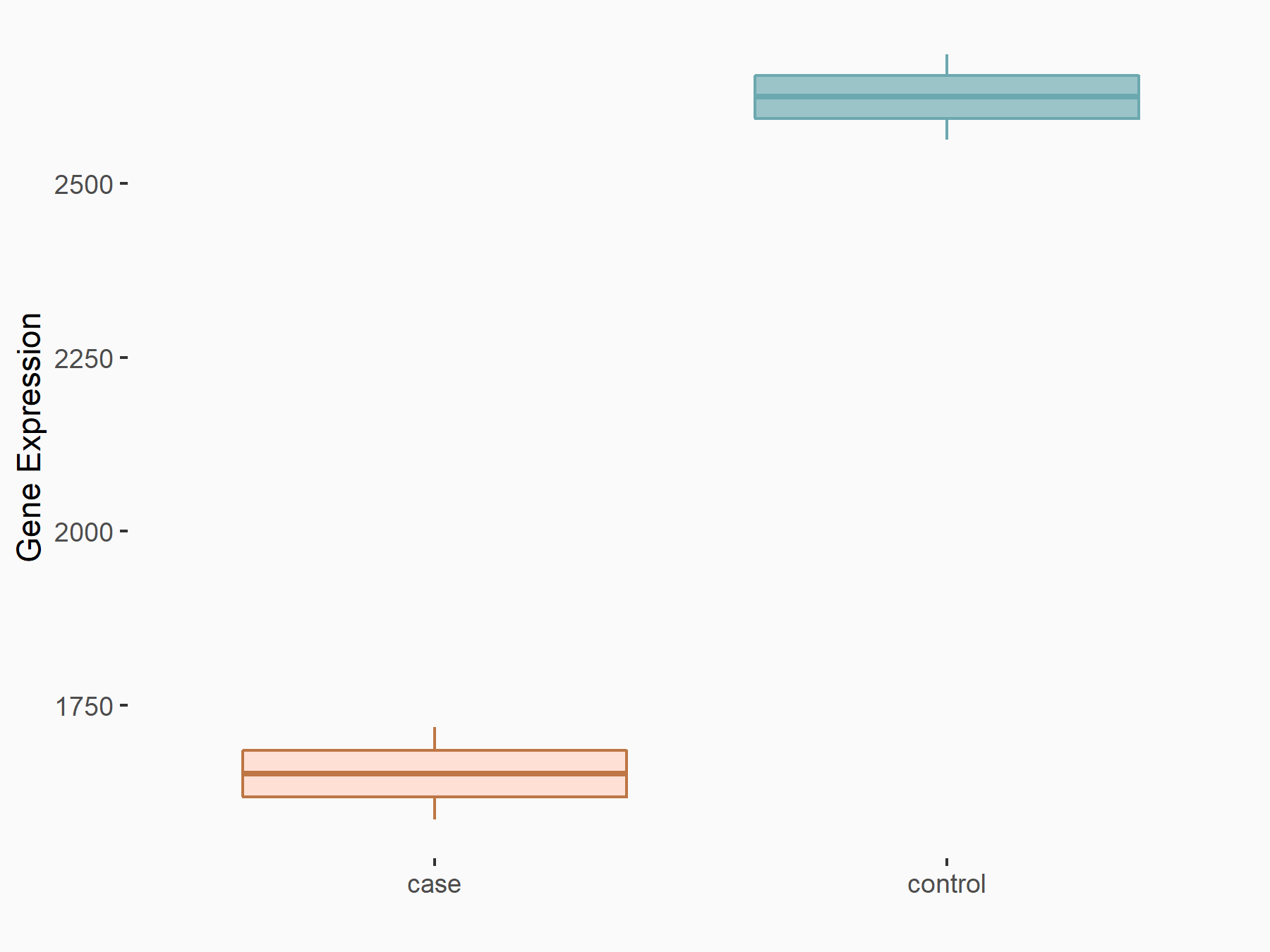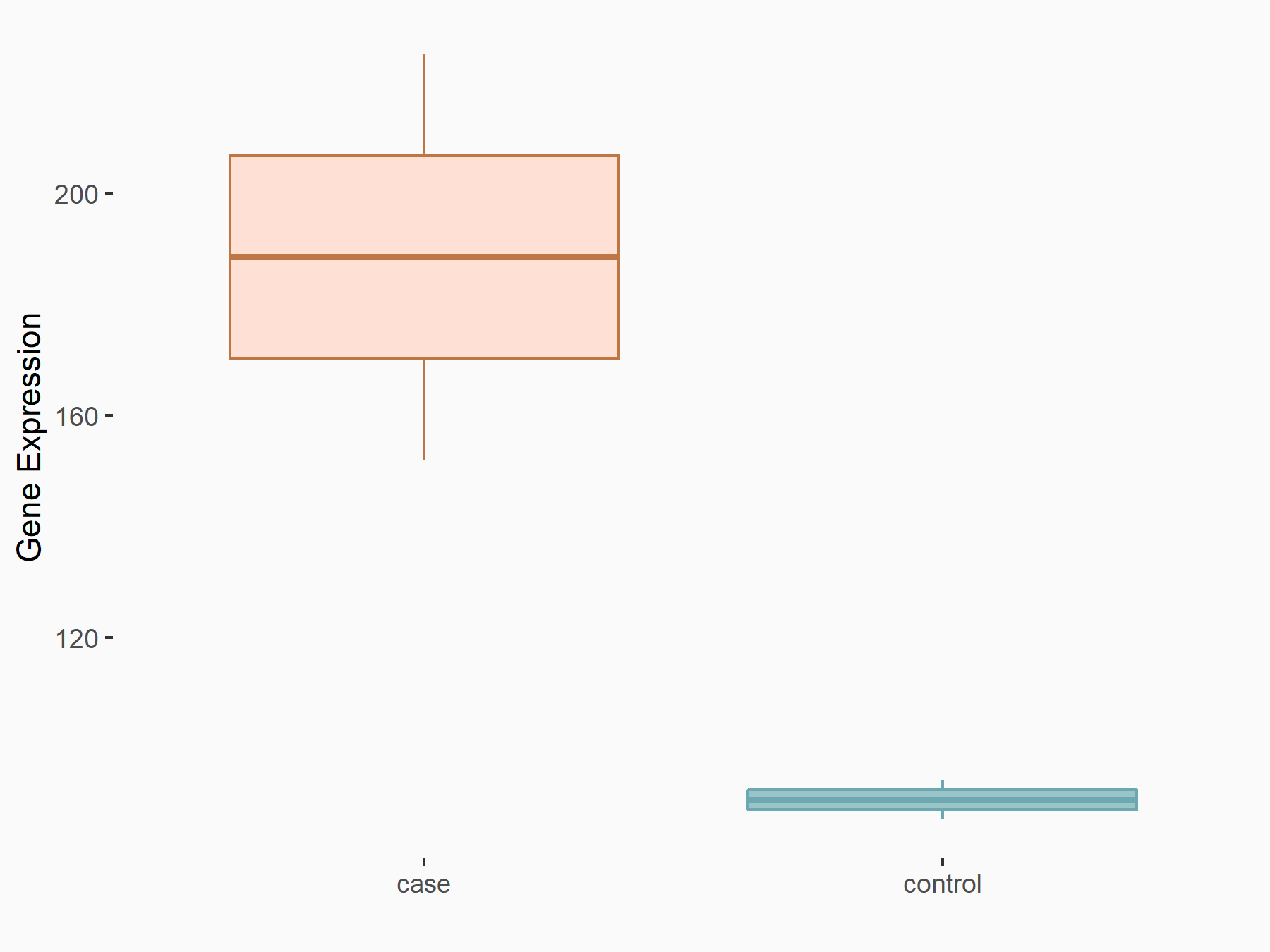m6A Target Gene Information
General Information of the m6A Target Gene (ID: M6ATAR00351)
Full List of m6A Methylation Regulator of This Target Gene and Corresponding Disease/Drug Response(s)
NOTCH1
can be regulated by the following regulator(s), and cause disease/drug response(s). You can browse detail information of regulator(s) or disease/drug response(s).
Browse Regulator
Browse Disease
Fat mass and obesity-associated protein (FTO) [ERASER]
| Representative RNA-seq result indicating the expression of this target gene regulated by FTO | ||
| Cell Line | 253J cell line | Homo sapiens |
|
Treatment: siFTO 253J cells
Control: 253J cells
|
GSE150239 | |
| Regulation |
  |
logFC: 6.94E-01 p-value: 5.11E-07 |
| More Results | Click to View More RNA-seq Results | |
| In total 1 item(s) under this regulator | ||||
| Experiment 1 Reporting the m6A Methylation Regulator of This Target Gene | [1] | |||
| Response Summary | In bladder cancer, the changes in m6A methylation level mainly appeared at 5' untranslated region (5' UTR) of MALAT1 and Neurogenic locus notch homolog protein 1 (NOTCH1) transcripts, and at 3' UTR of CSNK2A2 and ITGA6 transcripts, responding to the overexpression of FTO. SFPQ could influence the FTO-mediated m6A RNA demethylation, eventually affecting the gene expression. | |||
| Target Regulation | Down regulation | |||
| Responsed Disease | Bladder cancer | ICD-11: 2C94 | ||
| Pathway Response | Notch signaling pathway | hsa04330 | ||
| Cell Process | Cell proliferation | |||
| Cell invasion | ||||
| Cell apoptosis | ||||
| In-vitro Model | HT-1197 | Recurrent bladder carcinoma | Homo sapiens | CVCL_1291 |
| HT-1376 | Bladder carcinoma | Homo sapiens | CVCL_1292 | |
| In-vivo Model | BALB/cnu/nu mice (4-5 weeks old) were used for the xenograft experiment. The mice were randomly divided into 2 groups (n = 6 for each group) and injected with 5 × 106 HT-1197 cells in control group or FTO plasmid group, respectively. | |||
Methyltransferase-like 14 (METTL14) [WRITER]
| Representative RNA-seq result indicating the expression of this target gene regulated by METTL14 | ||
| Cell Line | MDA-MB-231 | Homo sapiens |
|
Treatment: siMETTL14 MDA-MB-231 cells
Control: MDA-MB-231 cells
|
GSE81164 | |
| Regulation |
  |
logFC: -8.37E-01 p-value: 6.43E-03 |
| More Results | Click to View More RNA-seq Results | |
| In total 1 item(s) under this regulator | ||||
| Experiment 1 Reporting the m6A Methylation Regulator of This Target Gene | [2] | |||
| Response Summary | Mettl14 and m6A modification participate in the RNA stability of Neurogenic locus notch homolog protein 1 (NOTCH1) mRNA. Notch1 plays an essential role in bladder tumorigenesis and bladder TIC self-renewal. | |||
| Target Regulation | Down regulation | |||
| Responsed Disease | Bladder cancer | ICD-11: 2C94 | ||
| Cell Process | Cell proliferation | |||
| Self-renewal | ||||
| Cell metastasis | ||||
| In-vitro Model | Primary bladder cancer cells (Obtained from bladder cancer patients) | |||
Methyltransferase-like 3 (METTL3) [WRITER]
| Representative RNA-seq result indicating the expression of this target gene regulated by METTL3 | ||
| Cell Line | LX2 cell line | Homo sapiens |
|
Treatment: shMETTL3 LX2 cells
Control: shLuc LX2 cells
|
GSE207909 | |
| Regulation |
  |
logFC: -6.68E-01 p-value: 1.32E-12 |
| More Results | Click to View More RNA-seq Results | |
| In total 1 item(s) under this regulator | ||||
| Experiment 1 Reporting the m6A Methylation Regulator of This Target Gene | [3] | |||
| Response Summary | METTL3-catalyzed m6A modification promotes Neurogenic locus notch homolog protein 1 (NOTCH1) expression and the activation of the Notch signaling pathway. Forced activation of Notch signaling pathway successfully rescues the growth, migration, and invasion capacities of METTL3-depleted ESCC cells. | |||
| Target Regulation | Up regulation | |||
| Responsed Disease | Esophageal squamous cell carcinoma | ICD-11: 2B70.1 | ||
| Pathway Response | Notch signaling pathway | hsa04330 | ||
| Cell Process | Cell migration | |||
| Cell invasion | ||||
| In-vitro Model | TE-9 | Esophageal squamous cell carcinoma | Homo sapiens | CVCL_1767 |
| KYSE-30 | Esophageal squamous cell carcinoma | Homo sapiens | CVCL_1351 | |
| In-vivo Model | For induction of ESCC, 4-week-old mice were treated with drinking water containing 50 ug/mL 4NQO (Sigma-Aldrich, USA) for 16 weeks and then given normal drinking water for another 4-5 weeks. Cre was activated by the intraperitoneal injection of tamoxifen (Sigma-Aldrich, USA) at a dose of 9 mg per 40 g body weight every other day for a total of three injections. For tumor measurement, mice were sacrificed, and the esophagus was dissected immediately. The surface areas of tumors were measured as described previously. | |||
YTH domain-containing family protein 2 (YTHDF2) [READER]
| Representative RNA-seq result indicating the expression of this target gene regulated by YTHDF2 | ||
| Cell Line | Testis | Mus musculus |
|
Treatment: YTHDF2 knockout mice testis
Control: Mice testis
|
GSE147574 | |
| Regulation |
  |
logFC: 1.06E+00 p-value: 8.73E-04 |
| More Results | Click to View More RNA-seq Results | |
| In total 1 item(s) under this regulator | ||||
| Experiment 1 Reporting the m6A Methylation Regulator of This Target Gene | [4] | |||
| Response Summary | YTHDF2 inhibits Notch signaling by downregulating the Neurogenic locus notch homolog protein 1 (NOTCH1), HES1, and HES5 mRNA levels. | |||
| Target Regulation | Down regulation | |||
| Pathway Response | Notch signaling pathway | hsa04330 | ||
| Cell Process | Extracellular stress | |||
| Cell apoptosis | ||||
| In-vitro Model | HeLa | Endocervical adenocarcinoma | Homo sapiens | CVCL_0030 |
| Jurkat | T acute lymphoblastic leukemia | Homo sapiens | CVCL_0065 | |
Bladder cancer [ICD-11: 2C94]
| In total 2 item(s) under this disease | ||||
| Experiment 1 Reporting the m6A-centered Disease Response | [1] | |||
| Response Summary | In bladder cancer, the changes in m6A methylation level mainly appeared at 5' untranslated region (5' UTR) of MALAT1 and Neurogenic locus notch homolog protein 1 (NOTCH1) transcripts, and at 3' UTR of CSNK2A2 and ITGA6 transcripts, responding to the overexpression of FTO. SFPQ could influence the FTO-mediated m6A RNA demethylation, eventually affecting the gene expression. | |||
| Responsed Disease | Bladder cancer [ICD-11: 2C94] | |||
| Target Regulator | Fat mass and obesity-associated protein (FTO) | ERASER | ||
| Target Regulation | Down regulation | |||
| Pathway Response | Notch signaling pathway | hsa04330 | ||
| Cell Process | Cell proliferation | |||
| Cell invasion | ||||
| Cell apoptosis | ||||
| In-vitro Model | HT-1197 | Recurrent bladder carcinoma | Homo sapiens | CVCL_1291 |
| HT-1376 | Bladder carcinoma | Homo sapiens | CVCL_1292 | |
| In-vivo Model | BALB/cnu/nu mice (4-5 weeks old) were used for the xenograft experiment. The mice were randomly divided into 2 groups (n = 6 for each group) and injected with 5 × 106 HT-1197 cells in control group or FTO plasmid group, respectively. | |||
| Experiment 2 Reporting the m6A-centered Disease Response | [2] | |||
| Response Summary | Mettl14 and m6A modification participate in the RNA stability of Neurogenic locus notch homolog protein 1 (NOTCH1) mRNA. Notch1 plays an essential role in bladder tumorigenesis and bladder TIC self-renewal. | |||
| Responsed Disease | Bladder cancer [ICD-11: 2C94] | |||
| Target Regulator | Methyltransferase-like 14 (METTL14) | WRITER | ||
| Target Regulation | Down regulation | |||
| Cell Process | Cell proliferation | |||
| Self-renewal | ||||
| Cell metastasis | ||||
| In-vitro Model | Primary bladder cancer cells (Obtained from bladder cancer patients) | |||
Oral cavity/oesophagus/stomach in situ carcinoma [ICD-11: 2E60]
| In total 1 item(s) under this disease | ||||
| Experiment 1 Reporting the m6A-centered Disease Response | [3] | |||
| Response Summary | METTL3-catalyzed m6A modification promotes Neurogenic locus notch homolog protein 1 (NOTCH1) expression and the activation of the Notch signaling pathway. Forced activation of Notch signaling pathway successfully rescues the growth, migration, and invasion capacities of METTL3-depleted ESCC cells. | |||
| Responsed Disease | Esophageal squamous cell carcinoma [ICD-11: 2B70.1] | |||
| Target Regulator | Methyltransferase-like 3 (METTL3) | WRITER | ||
| Target Regulation | Up regulation | |||
| Pathway Response | Notch signaling pathway | hsa04330 | ||
| Cell Process | Cell migration | |||
| Cell invasion | ||||
| In-vitro Model | TE-9 | Esophageal squamous cell carcinoma | Homo sapiens | CVCL_1767 |
| KYSE-30 | Esophageal squamous cell carcinoma | Homo sapiens | CVCL_1351 | |
| In-vivo Model | For induction of ESCC, 4-week-old mice were treated with drinking water containing 50 ug/mL 4NQO (Sigma-Aldrich, USA) for 16 weeks and then given normal drinking water for another 4-5 weeks. Cre was activated by the intraperitoneal injection of tamoxifen (Sigma-Aldrich, USA) at a dose of 9 mg per 40 g body weight every other day for a total of three injections. For tumor measurement, mice were sacrificed, and the esophagus was dissected immediately. The surface areas of tumors were measured as described previously. | |||
References